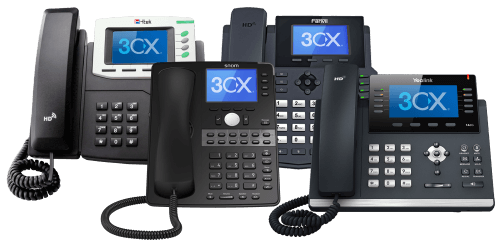What is a leased line?
Simply put, a leased line is a dedicated internet access line that handles both data and voice. Its worth understanding the advantages and disadvantages of a Leased Line before making your office internet connectivity decisions.
A leased line is rented by your business from a phone service or business internet provider and it is mainly used for high-speed internet connections, or as a dedicated link between two premises. Unlike dial-up connections, a leased line is always active, and it assures a consistently high quality connection. By using fibre technology, the bandwidth can be guaranteed with no speed drop off relative to the distance between the exchange and the end point.
Just like with anything else, before making an investment, it is worth learning more about the product.
Why do you need a leased line?
If it is simply a business internet connection that you are after, then there are lots of quicker and more cost-effective options available to you on the market that would sufficiently satisfy your needs.
It is important to understand that a leased line is not the same as an internet connection.
Just like a pipe can carry many different things, so can a leased line be used to carry many different types of voice, video and data traffic.
A leased line can carry internet traffic including web pages, emails, and video streaming. It can also carry phone calls, and Voice over Internet Protocol (VoIP), and it can carry corporate Virtual Private Network (VPN), Wide Area Network (WAN) or Local Area Network (LAN) traffic. It can also be used in complex MPLS networks.
For more complex and demanding office situations it’s best to really understand the advantages and disadvantages of a Leased Line. The benefits far outweigh the downside especially as competition in this space drives down the costs.
What are leased lines used for?
Leased lines are generally used to:
- Link corporate offices to the internet
- Connect local area networks, or several corporate offices together
- Link PCs and servers in different locations
- Carry voice and video calls
- Share IT resources and carry data between sites
- Enable remote connections to head office PC
Do you actually need a leased line?
To make an investment into a dedicated leased line, you need to ask yourself the following questions:
- Is your business internet critical?
- Do you need to connect geographically distant or remote offices?
- Would losing internet connection be damaging to your business?
- Is quick and reliable data exchange crucial to your business?
If your answer is ‘yes’ to these questions, then it is worth exploring both the advantages and disadvantages of a dedicated leased line before taking the plunge.
Advantages of a dedicated line
Reliability
If your business relies on the internet for its day to day running, you will know that DSL broadband is simply not reliable enough.
Your business needs a reliable connection to the web that is consistent and ‘uncontended’ at all times. A leased line provides your business with a dedicated line with no contention from other businesses or individuals.
You no longer have to worry about Fair Usage Policy (FUP) as you can use as much data as you like for the monthly price you agree.
You don’t have to worry about a drop in your internet connection anymore because your dedicated leased line is exclusive to your business and it will maintain its performance levels 24/7. So, you can always meet that deadline, communicate with your workforce and close that deal with confidence.
Better Support
If your broadband connection goes down, you could be without an internet connection for days. This could have disastrous consequences for your business.
Therefore, a leased line comes with a Service Level Agreement (SLA), which guarantees that major connectivity issues will be resolved quickly and efficiently.
The providers’ Network Operations Centre monitors their connections around the clock, ensuring that help is on hand if a line goes down.
Faster upload speeds and download speeds
A dedicated line offers bandwidth transmission speeds of between 10 Mbps and 10 Gbps upstream and downstream, called a synchronous connection, for a standard leased line. Redundancy and resilient options can also be added for further to provide further peace of mind.
However, unlike a Digital Subscriber Line (DSL) or cable modem Internet connection, you are able to control how the bandwidth is distributed on a dedicated line, because you are the only locations using the line. That means larger files get the bandwidth they need to travel quickly from location to location.
This is important if you are uploading to the cloud, downloading large volumes of data on a daily basis, if you are running your own in-house servers to host websites, if you are streaming, using VoIP telephony, utilizing video conferencing or sharing large data files.
Unlike standard broadband, there are no usage caps on the amount of data you can transfer and you simply cannot exceed your data allowance. Leased Lines also deliver Ultra-low packet latency, which is ideal for high-end applications such as Voice over IP and High Definition video
Security
A leased line is also referred to as a dedicated internet access (DIA) line because it is exclusively dedicated to only the two locations it is connecting. Combined with appropriate router and firewall settings, a dedicated internet access line, reduces the security risks due to it not being a shared service as with DSL circuits.
Disadvantages of a dedicated line
Cost
There is no escaping the fact that leased lines are a lot more expensive than Asymmetric Digital Subscriber (ADSL) or FTTC connections.
The cost will be affected by factors such as how much bandwidth you need on your dedicated line, the speed of connection you want, service availability in your area, whether you would like voice capability as well as data transmission as part of the service, and ultimately how far your budget can stretch.
There is also an additional charge per line for set-up, and if you have multiple locations that also require dedicated lines, this could come with a substantial price tag. The Gigabit Voucher scheme, currently in place, provides for up to £3000 to offset initial install and equipment costs.
Longer wait times
Installing a leased line can take considerably longer (months rather than weeks) because it is more complex than installing a standard ADSL connection.
The difference is that an ADSL or FTTC connection can utilise a pre-existing circuit, such as your phone line. However, a leased line will require a completely new circuit and labour to connect your premises to the leased line provider’s network.
Should you choose a leased line?
Although using the internet can be much less reliable and secure, if your business is not as internet critical, then the likelihood is that a standard, market ready DSL broadband connection will do the job for you at a fraction of the price.
Should you wish to discuss the advantages and disadvantages of a Leased Line in more detail then Call Juno Telecoms for a no obligation discussion
However, if your business needs a highly reliable connection backed by a Service Level Agreement (SLA), and you operate in multiple locations than a leased line is probably the right choice for you.















